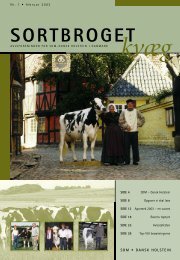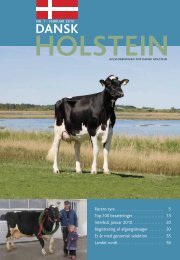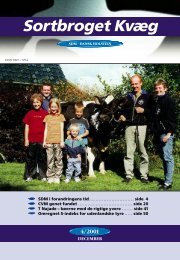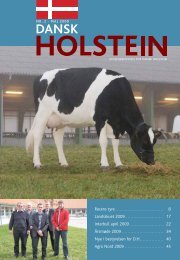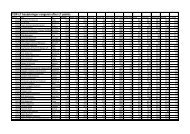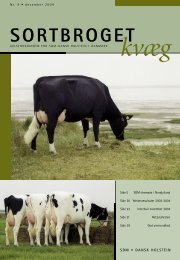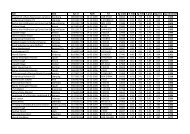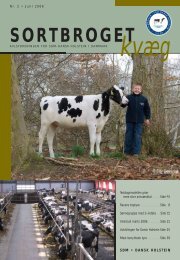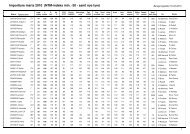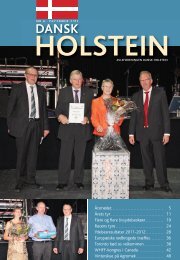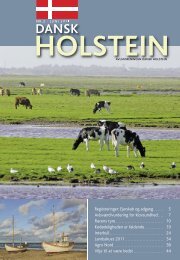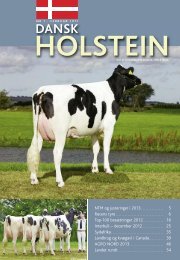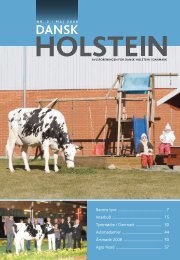2012 WORLD HOLSTEIN CONFERENCE - Dansk Holstein
2012 WORLD HOLSTEIN CONFERENCE - Dansk Holstein
2012 WORLD HOLSTEIN CONFERENCE - Dansk Holstein
Create successful ePaper yourself
Turn your PDF publications into a flip-book with our unique Google optimized e-Paper software.
SESSION 3: IMPROVING REPRODUCTIONUSING NEW TECHNOLOGIESAdvancement in Natural Heat DetectionCLAIRE PONSART (FRANCE)Claire Ponsart’s area of research concerns animal breeding andartificial v insemination. After being qualified as a veterinarian,her PhD thesis was dedicated to the use of flushing as a meansto improve cyclicity resumption in beef cattle. She joined France’sUNCEIA Research and Development department in 1998 with theresponsibility of leading projects related to embryo production incattle. In 2002, she was chosen to implement new practical tools inFrench breeding companies, aiming to improve fertility within theUNCEIA Research and Development project called “Fertility at First”.Thus, a special interest of Claire’s is reproduction management,specifically looking at ways to achieve fertility improvement togetherwith genetic selection. Since 2010, Claire is the scientific director atthe National Union of French AI and Breeding Companies and has extensive collaborations with researchgroups both in France and in other countries around the world.Ovulation detection is a key step in reproduction management, as it determines the decision of insemination. Withoutpossibility of progesterone monitoring, observation of changes in animal’s behavior during heat remains the classicalway for breeders to predict the ovulation time and adjust the timing of AI. However, heat expression shows variationboth in intensity, in duration and by the moment when signs occur. In the <strong>Holstein</strong> breed, cows’ heats are nowadaysboth more discreet and shorter than before, especially in high producing cows. The heat expression will be poor inherds with a high level of milk production, different calving periods and reproduction in housing. Consequently,heat detection thus entails a focussed attention and the use of all sexual signs. Increasing the sensibility of detectiondecreases the specificity, thereby increasing the frequency of AI performed at the wrong moment. A new methodcalled “DETOESTRUS” has been developed to assess the accuracy of heat detection in a dairy herd. This approachis innovative because it allows to distinguish problems associated with cows (delayed resumption of postpartumcyclicity, low estrous expression), to those related to breeder’s practices (defect in sensitivity or specificity detection),and so to provide targeted solutions based on farmer’s objectives and constraints. The dairy version includes anestimate of the sensitivity and specificity detection by prediction equations using data easily available in the breedingdocuments and considering estrous expression level of the cows.19For breeders who are not able to spend enough time in females’ observation, monitored heat detection aids have beenrecently developed to improve heat detection rates while sparing farmer’s time. Today, technical performances of thesedetectors posted by manufacturers show that these monitoring tools allow quite high detection rates (70-80 %) witha good accuracy (often above 90 %). Nevertheless, some recent scientific experiments show that the efficiency of heatdetection systems is highly variable according to the different automated devices, the characteristics of monitoredanimals and environmental conditions (housing, breeding management…). Considering that an initial investment isrequired to implement automated heat detection devices, the question of their cost / advantage ratio still remains tobe assessed according to the production system’s objectives.



